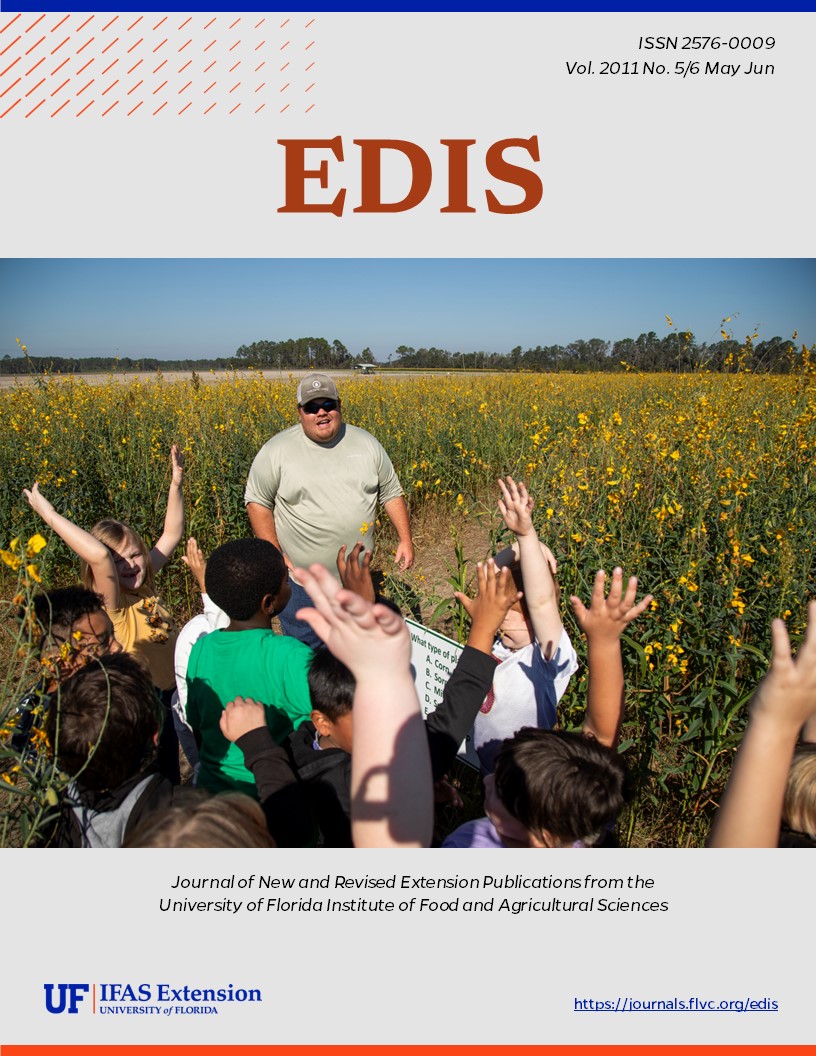Abstract
Is program evaluation just a “necessary evil” for Extension program implementation? Or, rather, an opportunity to identify and document accomplishments and discover ways to strengthen the impact of programs? This 5-page fact sheet defines evaluation, explains why evaluation is important to Extension programming beyond accountability requirements, describes how UF/IFAS Extension agents are currently evaluating their programs, and makes suggestions for future evaluation efforts that will showcase the value of Extension programming to the public. Written by Alexa J. Lamm, Glenn D. Israel, David Diehl, and Amy Harder and published by the UF Department of Agricultural Education and Communication, May 2011.
References
Agnew, D. M., & Foster, R. (1991). National trends in programming, preparation and staffing of county level Cooperative Extension service offices as identified by state Extension directors. Journal of Agricultural Education, 32, 47-53. https://doi.org/10.5032/jae.1991.01047
Cronbach, L. (2000). Course improvement through evaluation. In D. I. Stufflebeam, G. F. Madoux, & T. Kellaghan (Eds.), Evaluation models (pp. 16-32). Boston, MA: Kluwer Academic Publishers.
Davidson, J. E. (2005). Evaluation methodology basics: The nuts and bolts of sound evaluation. Thousand Oaks, CA: Sage. https://doi.org/10.4135/9781452230115
Fournier, D. M. (2005). Evaluation. In S. Mathison (Ed.), Encyclopedia of evaluation (pp. 139-140). Thousand Oaks, CA: Sage.
Franz, N. K., & Townson, L. (2008). The nature of complex organizations: The case of Cooperative Extension. In M. T. Braverman, M. Engle, M. E. Arnold, & R. A. Rennekamp (Eds.), Program evaluation in a complex organizational system: Lessons from Cooperative Extension. New Directions for Evaluation, 120, 5-14. https://doi.org/10.1002/ev.272
Kotter, J. P. (1996). Leading change. Boston, MA: Harvard Business School Press.
Meadows, D., Randers, J., & Meadows, D. (2004). Limits to growth. White River Junction, VT: Chelsea Green Publishing.
Neal, J. W. (2010). The first 4 years of a warmwater recreational pond management web site in Arkansas. Journal of Extension, 48(3). Retrieved from http://www.joe.org/joe/2010june/a4.php
Patton, M. Q. (2008). Utilization-focused evaluation (4th ed.). Thousand Oaks, CA: Sage.
Rossi, P. H., Lipsey, M. W., & Freeman, H. E. (2004). Evaluation: A systematic approach (7th ed.). Thousand Oaks, CA: Sage.
Schwandt, T. A. (2002). Evaluation practice reconsidered. New York, NY: Peter Lang.
Stufflebeam, D. L. (2001). Evaluation models. New Directions for Evaluation, 89, 7-98. https://doi.org/10.1002/ev.3

